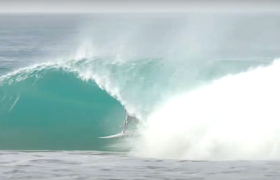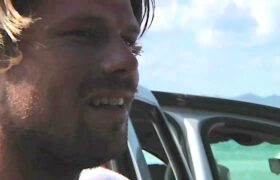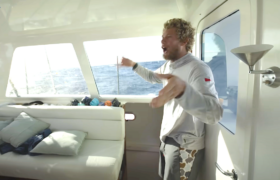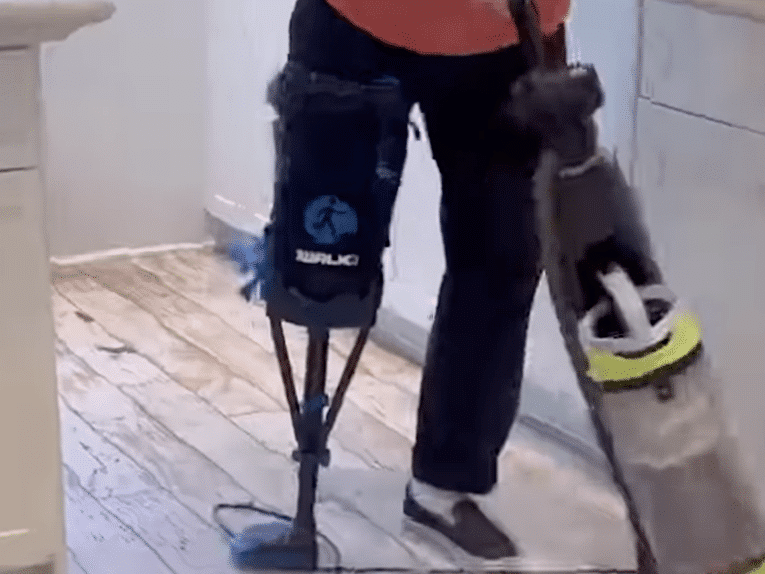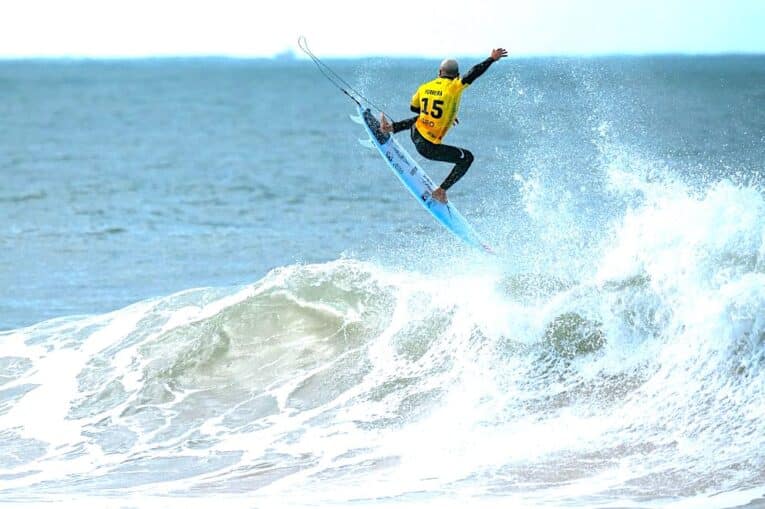"I’d get up in the morning, eat breakfast, go surfing, hang out, go surf beautiful waves again in the afternoon and then go party."
The Aussie surf legend Shane Herring, one-time foil to Kelly Slater, and Australia’s oversized contribution to the new school movement of the early nineties, died peacefully in his sleep on Sunday, aged fifty three.
Herring had fallen down the stairs of his West Tweed apartment block in the early hours of Sunday morning, complained about his sore head, ravaged the fridge, went to sleep and never woke up.
As far as exiting this coil goes, it’s as peaceful as it gets.
Herring, who was from Dee Why beach in Sydney’s north, burned real bright before flaming out although not before famously stomping Kelly Slater at the 1992 Coke event. It was Slater’s first-ever pro final, and it put Herro, for half the year, in the world number one slot.
In classic Herro style, to celebrate he bought the bar 55 jugs of beer with shots of Sambuca in 44 of ’em.
Herring’s win over Slater at Narrabeen was a defining moment, showcasing his muscular power. During this peak, he rode innovative “banana boards” shaped by Greg Webber, featuring extreme concaves and curves that allowed him to execute turns in tight, hollow waves—designs credited with influencing modern surfboard shapes.
Herring was on six-figure contracts with sponsors like O’Neill and Insight, enjoying an international profile and a reputation as a charismatic, good-natured talent.
Despite his success, Herring’s career unraveled quickly.
After 1992, he struggled with the pressures of fame and the pro surfing lifestyle. His form dipped, and by 1994, he retired from the WCT at age 23, just three years after turning pro.
His weaknesses, notably his discomfort with Pipeline on Hawaii’s North Shore—a critical venue for the world title—hindered his ability to sustain a championship run. He admitted Pipeline “scared the shit out of me,” though he excelled at other Hawaiian waves like Sunset Beach.
Off the water, Herring descended into a decade-long battle with alcohol and drug addiction, beginning around 1994. This period saw him living as a recluse on the Northern Beaches, losing friendships, his health, and even his teeth.
“You had no supervision. You had opportunity. It wasn’t like it is today. No coaches. No team managers. Racing from this place to the next. Half the time you’d sleep in the contest tent and go and get a baguette in the morning and do what you had to do to get by. And eventually, people are inviting you to stay, local people. Then you start to do well and you start earning some money. And then you start to have fun because you’ve got the stamina, you’re doing well and you think you can handle it. These days, it’s nothing like that.
“I’d get up in the morning, eat breakfast, go surfing, hang out, go surf beautiful waves again in the afternoon and then go party. If there were drugs there you took them. Coke. Acid. Whatever. You just didn’t think about it.”
Shane Herring cycled through psychiatric facilities before entering rehab in 2010, where he stayed for nearly a year.
Post-retirement, Herring’s life has been a mix of recovery and redemption. He worked as a ding repairer in Byron Bay and later reconnected with Greg Webber in the 2020s to collaborate on a new line of Shane Herring-branded surfboards, focusing on custom designs with a team including Justin Crawford and Jimmy Young-Whitforde.
He was a force, a cautionary tale and a funny and glorious little man who was loved and who will be missed.
I called up Herro’s old Dee Why pal Justin Crawford about him and he described a “classic little leprechaun. He didn’t hate anything and never had a bad word for anyone or anything… except for concaves.”
